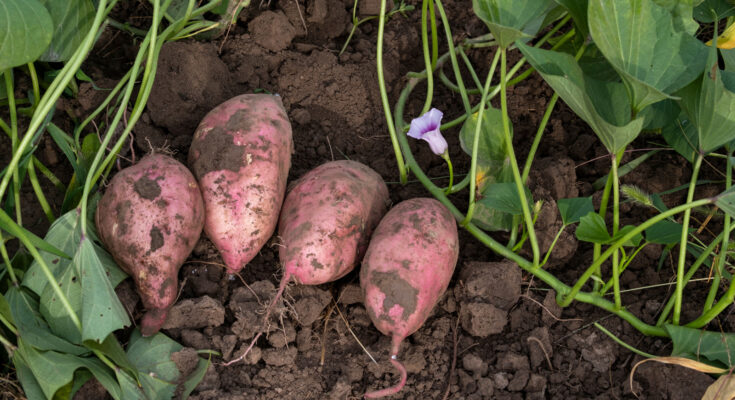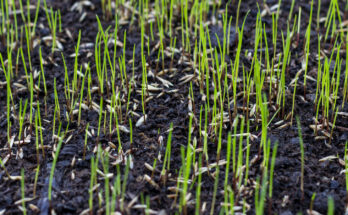The Spring Companion Plant That Will Boost Your Sweet Potato Harvest
Sweet potatoes are a coveted addition to home gardens. While they’re considered a warm-season crop that thrives in hotter climates, gardeners in cooler climates have some tricks that help to keep sweet potato plants happy and thriving in the north. One of those tricks is selecting the right companion plants to grow with them. This ensures that the soil conditions are perfect for sweet potato growth. So what’s the perfect spring companion plant for this sweet root veggie? Peas! Pea plants — including varieties like shelling peas, snow peas, and snap peas — grow well alongside many companion plants, and they perform a few awesome tasks that create the perfect soil for sweet potatoes.
First, they improve nitrogen levels in the soil (which is something all plants need for healthy growth) through a natural process called nitrogen fixation. They take nitrogen from the air and turn it into a form that other plants can use. When the pea plants die, they leave behind this nitrogen, making the soil healthier for the next crops, such as sweet potatoes. Pea plants also have a large root system, which breaks up, loosens, and aerates the soil. Since sweet potatoes prefer soil that’s well-draining with good aeration, this creates the perfect soil conditions for them to thrive. But here’s the thing: You probably shouldn’t just throw sweet potatoes and peas into your garden at the same time with the hope that both crops will perform well.
How to plant peas as a companion for sweet potatoes
Sweet potatoes grow extraordinary vines and spread, requiring lots of space to grow at their best. This means planting peas right next to sweet potatoes simultaneously may lead to the plants competing for space. Peas and sweet potatoes also require different temperatures for optimal growth. Peas prefer temperatures between 55 and 80 degrees Fahrenheit. Sweet potatoes, as mentioned, are warm-weather plants and prefer temps between 65 and 95 degrees Fahrenheit. They’re also frost-sensitive, so planting them too early or too late means frost might pose an issue. So to get the companion planting benefits of peas and sweet potatoes, what’s a gardener to do?
A better option is to plant these veggies consecutively by planting peas first. Most pea varieties can be planted as early as February, since they are a cool-weather crop. They also have a short growing season of about 60 days before you can harvest them, remove their plants (but leave the roots to decompose for maximum nitrogen benefits), and move on to planting sweet potatoes. Once you plant sweet potatoes, it will take some time for them to mature before you can harvest (between 100 and 150 days). However, as long as your peas are finished by late June or early July, you should be able to plant your sweet potatoes and harvest them by late September or early October. That’s right before the danger of the first frost arrives in northern climates.



